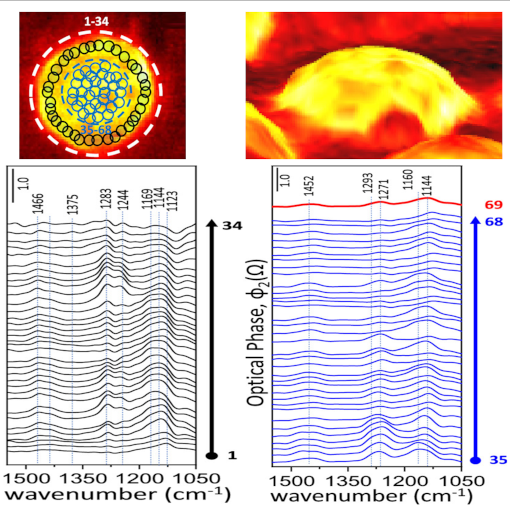
Molecular Identity of Catalytic Agent
Unambiguous identification of catalytic poisoning species requires experimental methods simultaneously delivering accurate information regarding adsorption sites and adsorption geometries of adsorbates with nanometer-scale spatial resolution, as well as their detailed chemical structure and surface functional groups. However, to date, it has not been possible to study catalytic sulfur poisoning of metal/metal-oxide interfaces at the nanometer scale without sacrificing chemical identity. In this study, nano-FTIR & s-SNOM identify the chemical nature, adsorption sites, and adsorption geometries of sulfur-based catalytic poisons on a Pd(nanodisk)/Al2O3 (thin-film) planar model catalyst surface at the nanometer scale. In addition, this study reveals striking variations between sulfate species from one nanoparticle to another and even vast alterations of sulfur poisoning on a single Pd nanoparticle.
s-SNOM & nano-FTIR provide critical molecular-level insights crucial for the development of high-performance heterogeneous catalysts with extended lifetimes.
This measurement was realized with the IR-neaSCOPE+s.
Further reading:
Say et al., JACS April 29 (2022)
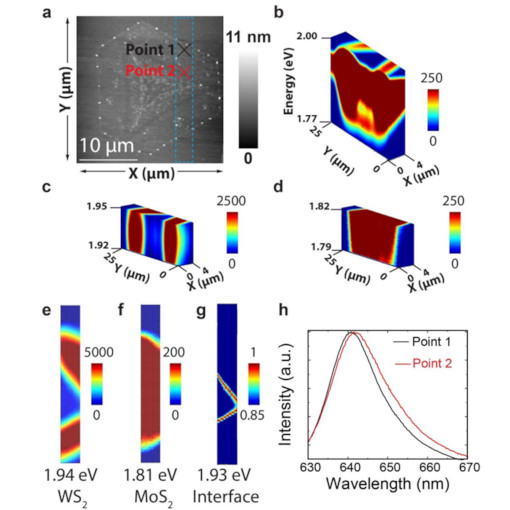
Nano-Interface 2D Alloys
Single-layer heterostructures exhibit striking quasiparticle properties and many-body interaction effects that hold promise for a range of applications. However, their properties can be altered by intrinsic and extrinsic defects, thus diminishing their applicability. Therefore, it is of paramount importance to identify defects and understand 2D materials’ degradation over time using advanced multimodal imaging techniques. Here we implemented a liquid-phase precursor approach to synthesize 2D in-plane MoS2–WS2 heterostructures exhibiting nanoscale alloyed interfaces and map exotic interface effects during photodegradation using a combination of hyperspectral tip-enhanced photoluminescence and Raman and near-field nanoscopy. Surprisingly, 2D alloyed regions exhibit thermal and photodegradation stability providing protection against oxidation. Coupled with surface and interface strain, 2D alloy regions create stable localized potential wells that concentrate excitonic species via a charge carrier funneling effect. These results demonstrate that 2D alloys can withstand extreme degradation effects over time and could enable stable 2D device engineering.
This measurement was realized with the IR-neaSCOPE+TERs.
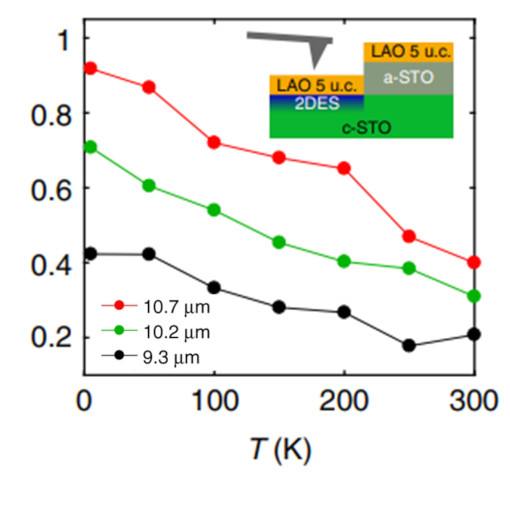
Conducting Oxide Interfaces
Probing the local transport properties of two-dimensional electron systems (2DES) confined at buried interfaces requires a non-invasive technique with a high spatial resolution operating in a broad temperature range. In this paper uses cryo s-SNOM as a tool for studying the conducting LaAlO3/SrTiO3 interface from room temperature down to 6º K. The s-SNOM signal, in particular its phase component, is highly sensitive to the transport properties of the electron system present at the interface.
cryo s-SNOM technology in combination with electrostatic gating provides novel application potential in phase separation and charge inhomogeneities due to ferroelectric domain walls, metal-insulator transitions and other emergent phenomena in a large family of 2D oxide interfaces.
This measurement was realized with the cryo-neaSCOPE+xs.
Further reading:
Luo et al., Nature Communications 10, 2774 (2019)
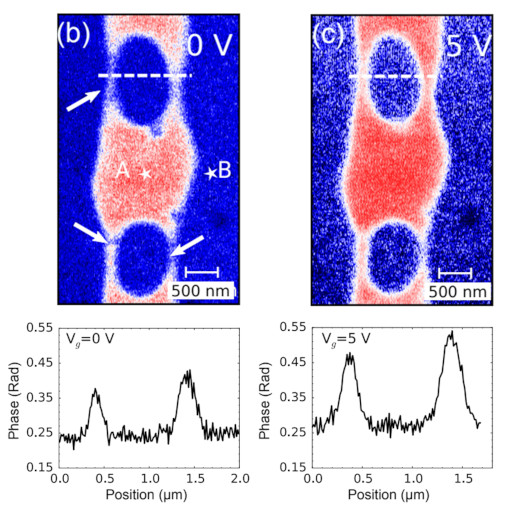
Electronic Transport in nano-Channels
Nanoscale channels realized at the conducting interface between LaAlO3 and SrTiO3 provide a perfect playground to explore the effect of dimensionality on the electronic properties of complex oxides. Here we compare the electric transport properties of devices realized using the AFM-writing technique and conventional photo-lithography. We find that the lateral size of the conducting paths has a strong effect on their transport behavior at low temperature. We observe a crossover from metallic to insulating regime occurring at about 50 K for channels narrower than 100 nm. The insulating upturn can be suppressed by the application of a positive backgate. We compare the behavior of nanometric constrictions in lithographically patterned channels with the result of model calculations and we conclude that the experimental observations are compatible with the physics of a quantum point contact.
cryo s-SNOM technology applies to oxide 2D nanoscale devices, confinement effects in future devices, and superconductivity.
This measurement was realized with the cryo-neaSCOPE+xs.
Further reading:
Boselli et al., Phys. Rev. B 103, 075431 (2021)
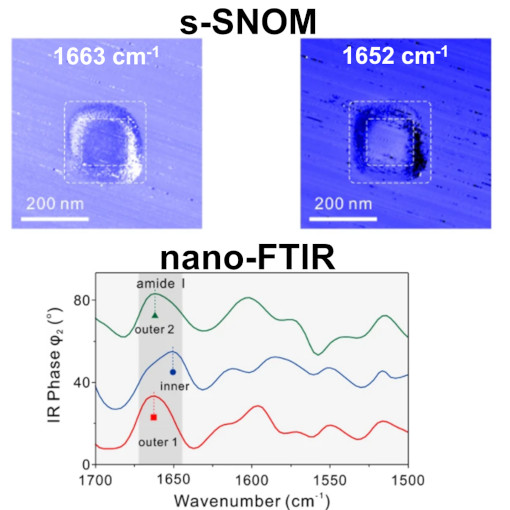
Enzymatical Biocatalytic Reactions
Biocatalytic transformations in living organisms, such as multi-enzyme catalytic cascades, proceed in different cellular membrane-compartmentalized organelles with high efficiency. Nevertheless, it remains challenging to mimic biocatalytic cascade processes of natural systems. One method to mimic natural enzymes is the use of multi-shelled metal-organic frameworks (MOFs). Such MOFs can be used as a hierarchical scaffold to spatially organize enzymes on nanoscale to enhance cascade catalytic efficiency. In this study, the authors employed s-SNOM and nano-FTIR technology, which resolves nanoscale heterogeneity of vibrational activity associated to enzymes encapsulated in multi-shelled MOFs. This work provides important insights into developing complex multi-spatial compartmental systems for multi-enzyme catalytic cascades that hold great promise in many industrial processes.
Infrared nanoscale analysis reveals molecular identity of nm-small materials. Method which can be applied in many chemical and pharmaceutical industrial processes.
This measurement was realized with the IR-neaSCOPE+s.
Further reading:
Man et al., Nature Communications 13, 305 (2022)


